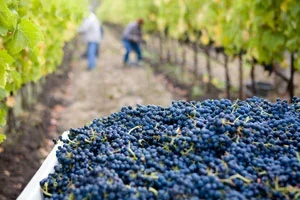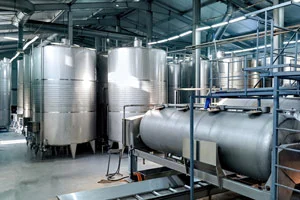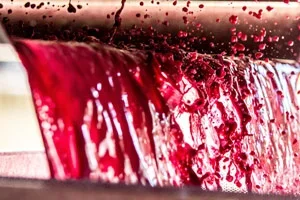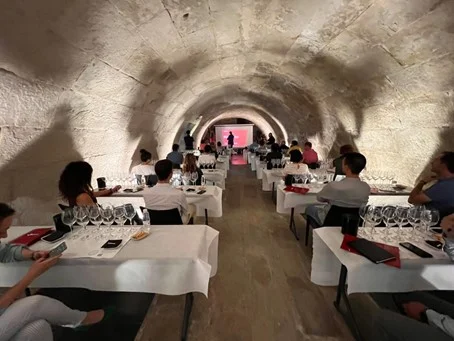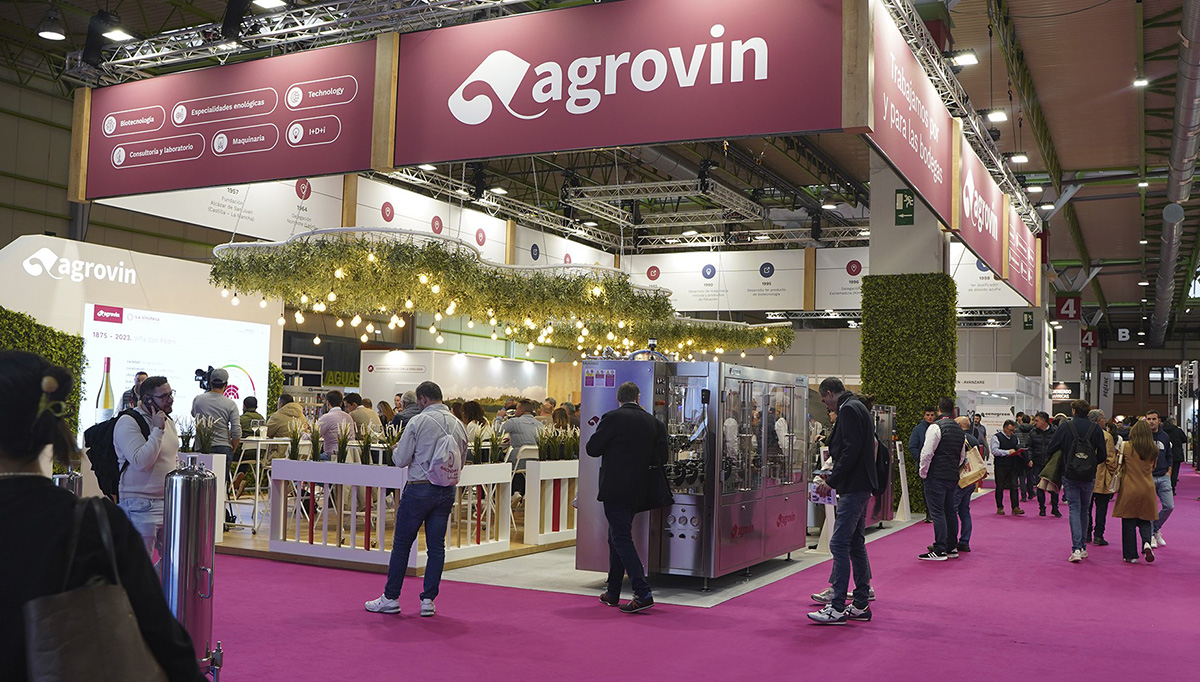At the Agrovin Group, we work everyday to remain available to winemakers and wineries around the world, acting as advisors to be trusted to find answers to unforeseen needs. And we do so by working hand in hand with the best experts and professionals who share the same objective: to work with and for wineries around the world and be their faithful colleague when it comes to making their quality wines.
With this as our goal, we’ve launched ‘The Agrovin Wine Bar’, a technical conference where we bring together oenologists and experts in the sector to share knowledge and experiences of the world of oenology and to support wineries in their daily lives. Our collaborators include the most influential people in the sector, such as Federico Cassasa (Professor of oenology and sensory analysis of the wine and viticulture department of the Polytechnic University of California), Alvaro Ribalta (Master of Wine), Pablo Orio (winemaker of Bodegas Muga and MoW student), and representatives from our technical team, such as Rebeca Lapuente and Miguel Martínez.
During this year we have held several technical days in the different wine regions of our country such as Rioja, Ribera del Duero and Castilla La Mancha, with the aim of bringing together the winemakers of the different wineries, know their needs and offer them quality technical information. This information is very useful when facing the harvest and the subsequent preparation stage. We have also held tastings of numerous wines and varieties from around the world to discuss with them trends in wine consumption and sales in the world, with the aim of guiding them on the tastes of consumers today.
Our experts. Who they are and what they have told us:
Federico Cassasa. Professor of oenology and sensory analysis in the wine and viticulture department of the Polytechnic University of California.
For us, it is a privilege to have the support and collaboration of professionals such as Federico Cassasa to host a workshop on technical issues of great relevance to winemakers in our country, such as: ‘Oxygen, phenols, quinones and thiols in wines: chemistry, management and sensory implications’ and ‘Modulation and astringency during fermentation in finished wine’
In his paper on ‘The modulation of astringency’, Federico explained the description of the cellular structure of skins and seeds, and how this influences the extraction of tannins, following the cellular and specific location of the tannins from skins and seeds, and also discussing the factors affecting the extraction and retention of tannins during the maceration of red wines.
In parallel, the oenology professor continued with a detailed presentation of the physiological (human) and intrinsic factors of wine that modulate the tactile sensation known as astringency, as well as the impact of different winemaking techniques on the extraction and retention of tannins in red wines, such as sangria, extended maceration, co-fermentation or wine cutting, or the use of extreme winemaking temperature protocols in Pinot noir.
The presentation ended with an open debate on the chemical and molecular bases for the softening and refinement of the tannins in red wines during aging.
The presentation concluded with a technical tasting of 9 commercially successful California wines, led by Federico Casassa and Bernat Feliu, Product Manager for the Agrovin Group, with the collaboration of Pablo Orio (winemaker at Bodegas Muga).
The following wines were selected by Federico Casassa for the tasting:
| Varietal | Year | Vineyard | Region |
| Pinot noir | 2019 | La Crema Monterrey Pinot Noir 2019 | Monterey AVA, Central Coast, CA |
| CAred blend | 2020 | Aphotic Red- Blend 2020 | California appelated (meaning= fruit from the central valley of CA) |
| Red blend | 2019 | Michael David FreakShow 2019 | Lodi, central valley, CA |
| Petite Sirah + Petit Verdot | 2019 | Michael David Petit Petit 2019 | Lodi, central valley, CA |
| CA red blend | 2019 | The Prisoner 2019 – Red Wine blend | Napa Valley AVA, North Coast, CA |
| Cabernet Sauvignon | 2019 | Justin – Cabernet Sauvignon | Paso Robles AVA, Central Coast, CA |
| Cabernet Sauvignon | 2018 | J.Lohr-Hilltop -Cabernet Sauvignon | Paso Robles AVA, Central Coast, CA |
| Cabernet Sauvignon | 2018 | Brave MT. Veeder Napa Valley 2018 | Napa Valley AVA, North Coast, CA |
| Cabernet Sauvignon | 2019 | Joseph Phelps Cabernet Sauvignon Napa Valley 2019 | Napa Valley AVA, North Coast, CA |
During the presentation on oxygen, phenols, quinones and thiols in wines: chemistry, management and sensory implications, Federico Cassasa explained to the attendees the interrelationships between phenolic compounds, oxygen and quinones, and how these balances can affect the color, the structure in the mouth and fundamentally, the aromas of white, red or even rosé wines. We also discussed the basic chemistry of the Fenton System in wines, by which oxygen is activated by transition metals such as iron, eventually generating hydrogen peroxide, which finally leads to the oxidation of ethanol to acetaldehyde or ethanol, as well as other volatile aldehydes. The Fenton System can be technically regulated to obtain the desired mouth qualities and sensations, colors and aromas.
Another topic discussed was the effect of thiols on wine aroma and how these are regulated by quinones, and therefore by the levels of dissolved oxygen. The hydrogen sulphide production factors and how they are regulated by the potential or redox status of the wine were also discussed.
Pablo Orio. Muga winemaker and MoW student
The prestigious winemaker from Bodegas Muga provided information of great interest to attendees regarding the vision of Californian wines from a technical, consumer and winemaker point of view of a winery in Spain, as that is who he represents.
Among other highlights, Pablo Orio drew the following conclusions:
- From a technical point of view, in Europe and Spain we are more limited in terms of technology since there are oenological practices or products that are commonplace in regions such as California, but not in Europe.
- From the consumer point of view, there is a great wine culture in California as the per capita consumption is slightly higher than in our country. California is a region where drinking wine is‘ cool ’and there is a higher percentage of younger older people who consume wine for this reason.
In addition, there is a greater concentration of large brands/wineries such as Franzia Winetaps, Barefoot Cellars or Carlo Rossi, among others, and direct sales work very well through tasting, visits, quality wine tourism, etc.
- From the point of view of the winemaker, Pablo Orio confessed that in Rioja, it would be very interesting to change soils, varieties, technology, etc., and open our minds in this regard.
Álvaro Ribalta. MoW
The Master of Wine, Álvaro Ribalta, had the opportunity to guide a tasting of Grenache wines from around the world and these were some of the most relevant conclusions during this activity on some specific topics:
- Peculiarities of the Grenache variety: It is a grape that, despite not having much color or structure (few tannins, moderate acidity), is able to demonstrate great levels of finesse, depth and elegance. Some Spanish producers or producers from other parts of the world describe it as the Pinot Noir of a warm climate, as it can bring similar characteristics to wines.
- Main regions where Grenache is notable: the good thing about Grenache is that it is very well adapted to many terroirs. Traditionally, Chateauneuf-du-Pape in the Rhone Valley has been the area par excellence of the Grenache, especially in international markets. However, Spain has several regions which are gaining international attention (Priory, Gredos, Rioja Oriental).
- Countries where Grenache is most in demand: In important and consolidated markets such as the USA and the UK, Grenache is increasing its market share. However, in other markets, such as the Scandinavian countries, where organic farming and sustainable methods are given a lot of value, there are very good opportunities for Spanish producers who usually work following these philosophies.
The wines included in this tasting include:
- Magnums de Alcohuaz ‘Cuesta Chica’ 2017
- Las Alas de Frontonio la Tejera 2018
- David & Nadia Grenache 2019
- Birichino Besson Vineyard Grenache VV 2019
- Espectacle del Montsand 2018
Rebeca Lapuente. Agrovin Group Technical Advisor
Our Agrovin Group Technical Consultant focused her presentation on the uncertainty that comes with the harvest each year and how to deal with it.
Her presentation focused on the importance of having the maximum possible information, as well as total control of the processes to guarantee the final result, all based on planning and the measurement of parameters such as the electrochemical potential or RedOx potential.
By knowing the electrochemical potential or RedOx potential, we can work accurately at specific times to affect the state of oxidation. This can give us greater control over the following:
- Nutrition management can be carried out from another point of view, associating each type of nutrient to the conditions of yeast development and not to the consumption of sugars.
- The oxygen inputs can be adjusted to the real needs of the wine and not to usual work protocols that do not assess their effect on each particular varietal.
- Knowledge of the processes and, therefore, their reproducibility over the years is facilitated.
- The benefits of carrying out specific treatments are valued, allowing to improve the management of inputs.
- All this, making it easier to obtain specific aromatic profiles sought by consumers.
Rebeca Lapuente also mentioned the measurement systems that the group has available, such as Electrowine and Tank Control, which make it possible to monitor and automate certain processes during the preparation that provide energy savings for the wineries while also granting those wineries who install the systems with greater knowledge of each phase of the production process to guarantee optimal results in terms of the final quality of the wine.
In this video, Rebeca Lapuente, Agrovin Group Technical Consultant, gives us the details of how to do this with practical examples:
